The Ceramic Legacy of Panos Valsamakis in Athens
The workshop of famed tile painter...
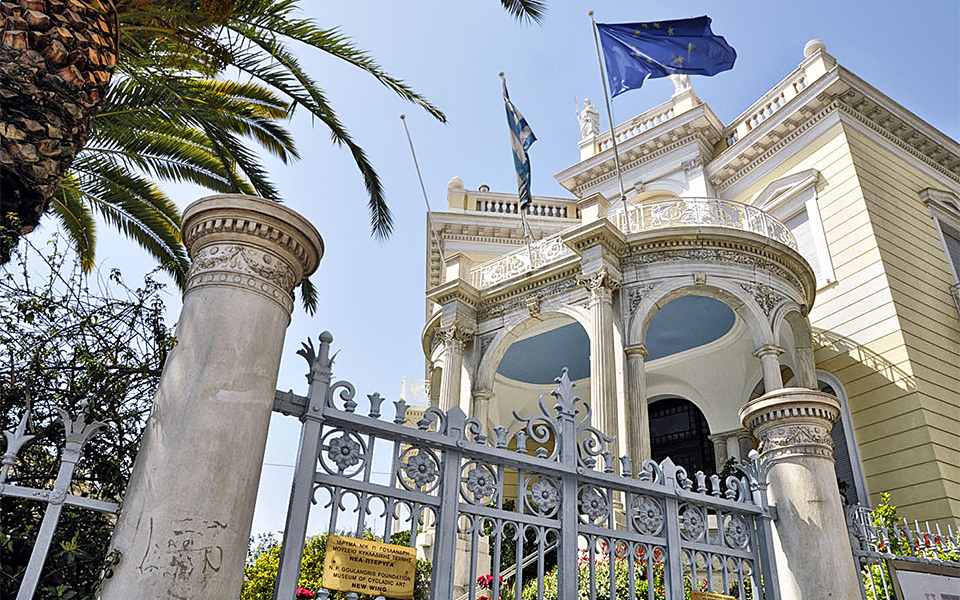
The aristocratic Stathatos mansion, where temporary exhibitions of Museum of Cycladic Art are hosted nowadays.
The choice of Athens as the definitive capital of the small modern Greek state echoed the romantic idea that modern Greeks were the direct descendants and natural heirs of ancient Greece.
Athens is an ancient city with a modern “skin.” From the Acropolis, the gaze of the unsuspecting visitor is lost in a white sea of modern structures and a line of hills, while a handful of taller buildings disrupt this seemingly colorless architectural uniformity. This is a stereotypical and rather unfair image of Athens. The second half of the 20th century may have deprived the Greek capital of its neoclassical soul; a whole district, however, at the foot of the Acropolis (renowned Plaka) and a large number of public buildings, private mansions or humbler dwellings bear witness to the organic and inextricable relationship between Athens and neoclassical architecture.
The history of Athenian neoclassicism takes us straight to the years of the rebirth of the ancient city, after centuries of silence and successive cycles of decline and limited, feeble recovery. The choice of Athens as the definitive capital of the small modern Greek state that rose from the flames of the War of Independence in the third decade of the 19th century, had a strongly symbolic character: it echoed the romantic idea that modern Greeks were the direct descendants and natural heirs of ancient Greece.
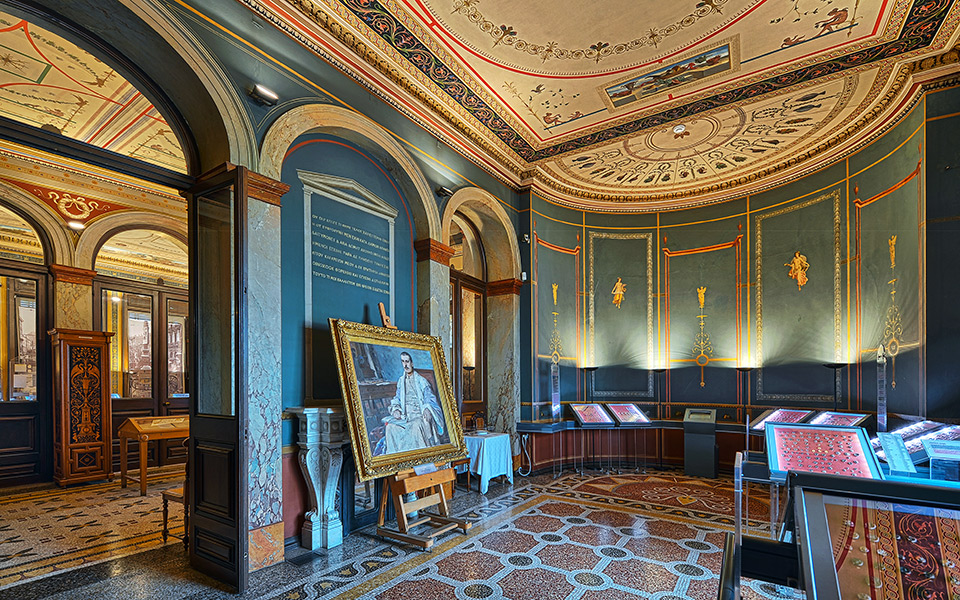
Numismatic Museum, initially Heinrich Schliemann's family residence.
Athens, with its ancient ruins and the Acropolis still more or less intact, embodied in the best way possible the ideal of reviving the ancient legend. The first public buildings applied classical Greek motifs, while the arrival of the Bavarians (following the enthronement of King Otto) enforced the view that Athens should become a city to glorify classicism. Until the dawn of the 20th century it was a purely neoclassical city. From 1910 and largely after 1930, however, the modernist movement made a dynamic appearance, though this did not necessarily mean the influence of neoclassicism disappeared altogether.
The greatest changes took place in the wake of World War II with an immense wave of demolitions of “older” buildings and the construction of modern multi-storied apartment blocks designed to meet new housing challenges. In the period between 1950 and 1978 Athens not only lost numerous architectural masterpieces, but also the image of a tranquil neoclassical city with tiled roofs and pretty courtyards. This mass destruction in such a short time prompted reactions from politicians, journalists and intellectuals, which in turn led to the drafting of a state plan for the protection of all important – both public and private – surviving buildings.
Today, instead of presenting the most famous neoclassical masterpieces of Athens, we suggest that you visit six important buildings of that era that are still in operation. Most do not charge admission. You can have a cup of coffee, view an exhibition or watch a classical music concert. But principally you will have the chance to see 19th century Athens the way Athenians do 100 or 150 years later.
“The history of Athenian neoclassicism takes us straight to the years of the rebirth of the ancient city”
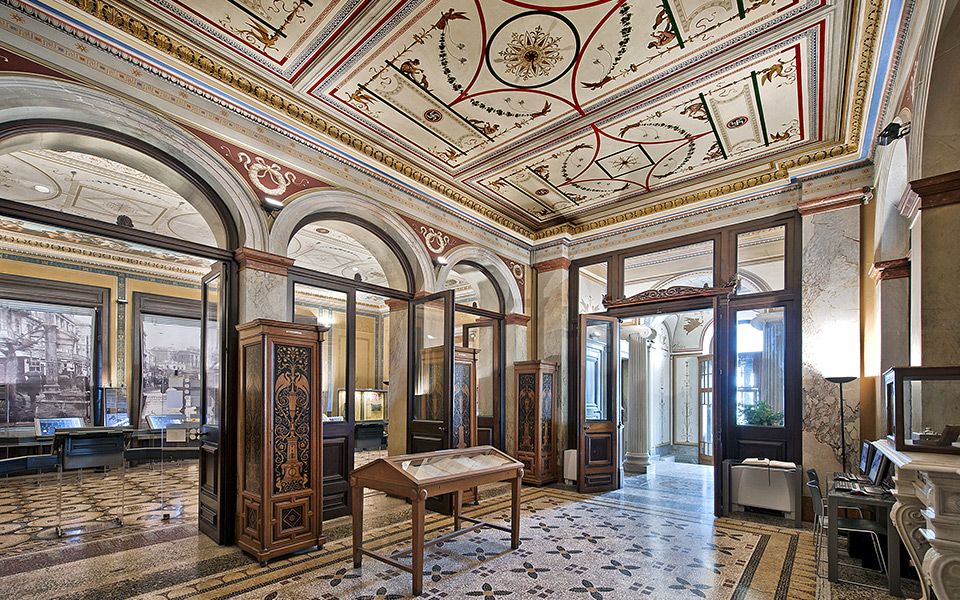
Numismatic Museum with impressive interior wall paintings.
ILIOU MELATHRON (NUMISMATIC MUSEUM)
Original use: Residence of the family of Heinrich Schliemann (1822-1890), the German entrepreneur and passionate archaeologist who located and excavated ancient Troy and Mycenae.
Actual use: The Numismatic Museum.
Why visit: To see a unique urban mansion of 19th century neoclassical Athens (1867), restored a few years ago. The first hall is dedicated to the monumental residence, the eminent personality and love for antiquity of its first occupant, Heinrich Schliemann, “the father of Mycenaean archaeology.” It is a two-storied building with impressive interiors. The wall paintings were executed by the Slovene painter Jurij Subic (1855-1890), known for his work in Vienna and Paris, who worked for one year for a fee of 8,500 drachmas.
Info: Admission is € 3 • Open Tuesdays-Sundays 09:00-16:00
• 12 Panepistimiou, Syntagma metro station.
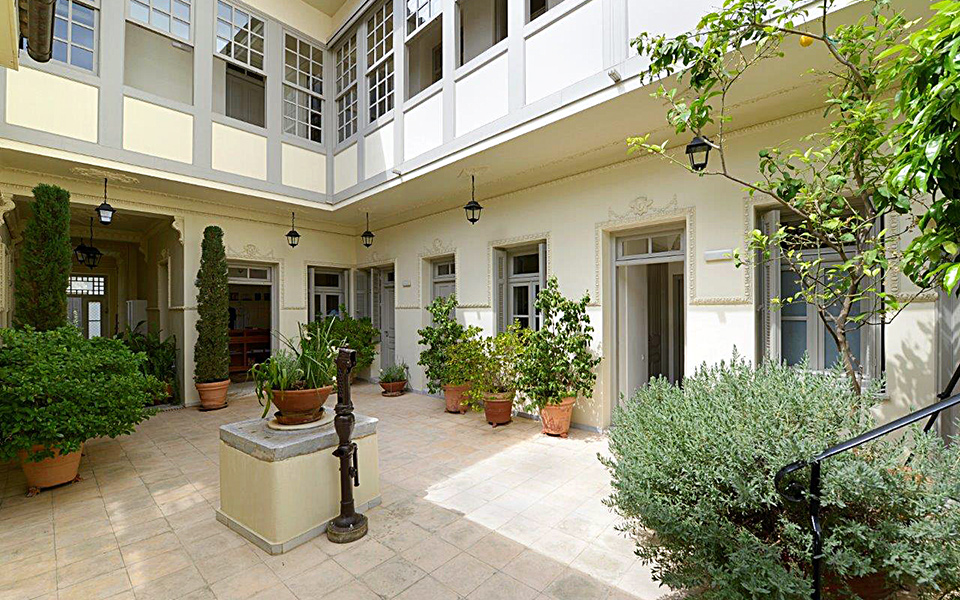
The yard of the Atopos building.
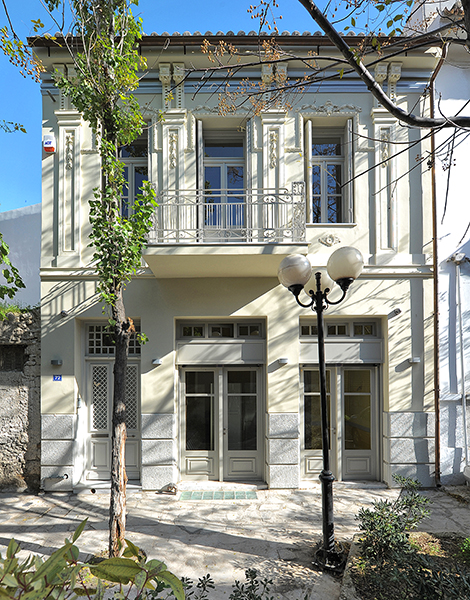
The Atopos building was an abandoned residence from 1912 before being renovated for its current use.
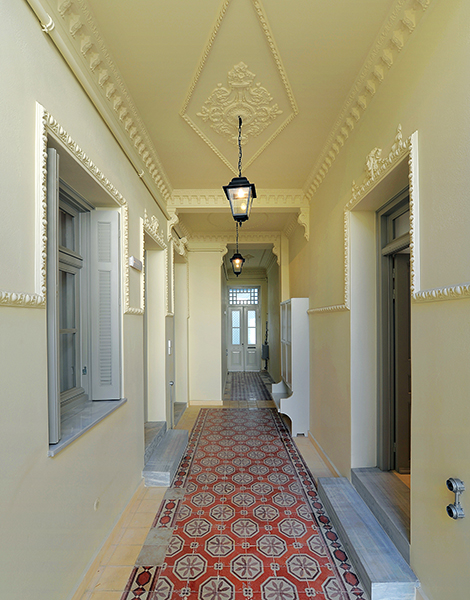
The original tiled floor has been preserved for visitors to admire.
ATOPOS
Original use: In its original state it was a typical Athenian residence dating to 1912, with a courtyard and a loggia on the upper floor, influenced by neoclassicism as well as modern movements of the time.
Actual use: It houses Atopos, one of the most pioneering cultural organizations in Athens today, with international projects and partners. It focuses on research on the human body, dressed or nude. This research takes the form of art exhibitions, publications, fanzines and other projects that develop the basic theme through interrelated subjects.
Why visit: To take a closer look at a humble Athenian residence that often served more than one family, as rooms were let to students or unmarried men. The old tiling is particularly interesting, as is the overall decor.
Info: Free and according to exhibition schedule • 72 Salaminos
• Tel. (+30) 210.883.8151 • Kerameikos metro station
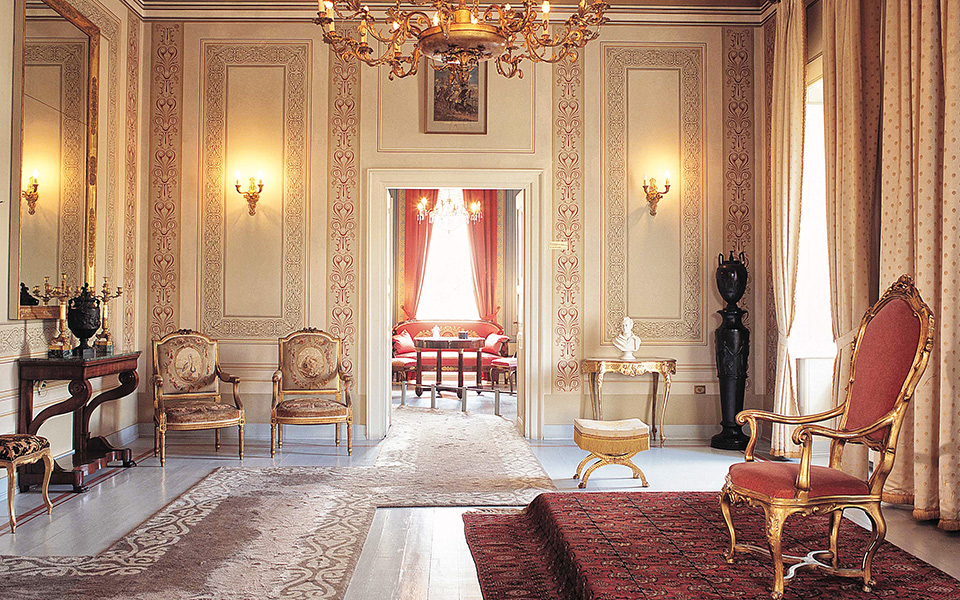
The "Throne Room" at the Museum of the City of Athens.
BLACK DUCK GARDEN
Original use: The building compound was occupied by Otto, the first king of Greece, after his marriage to the 18-year old Amalia. The young queen planted the garden of their temporary residence in 1836. “The garden of the old palace” was the first public garden in the capital, with four entrances, a fountain and a goldfish pond. It encompassed today’s Klafthmonos Square and stretched as far as Kolokotroni Square.
Actual use: Café and restaurant of the Museum of the City of Athens. The present-day museum garden is only a small portion of the original. It is nonetheless an oasis in the heart of Athens, with a palm tree planted by Amalia still in place.
Why visit: For a glimpse into the authentic Athens of old. Along with the café and restaurant, also visit the Museum of the City of Athens housed in two historic buildings. Among the exhibits are a scale model of Athens in 1842, paintings, engravings, sculptures, period furniture and other decorative objects, rugs, musical instruments, photographs, rare books and memorabilia.
Info: Open daily 10:00-13:00 (14:30 on weekends) • 5-7 Paparigopoulou & Klafthmonos Square
• Tel. (+30) 210.325.2396 • Panepistimio metro station.
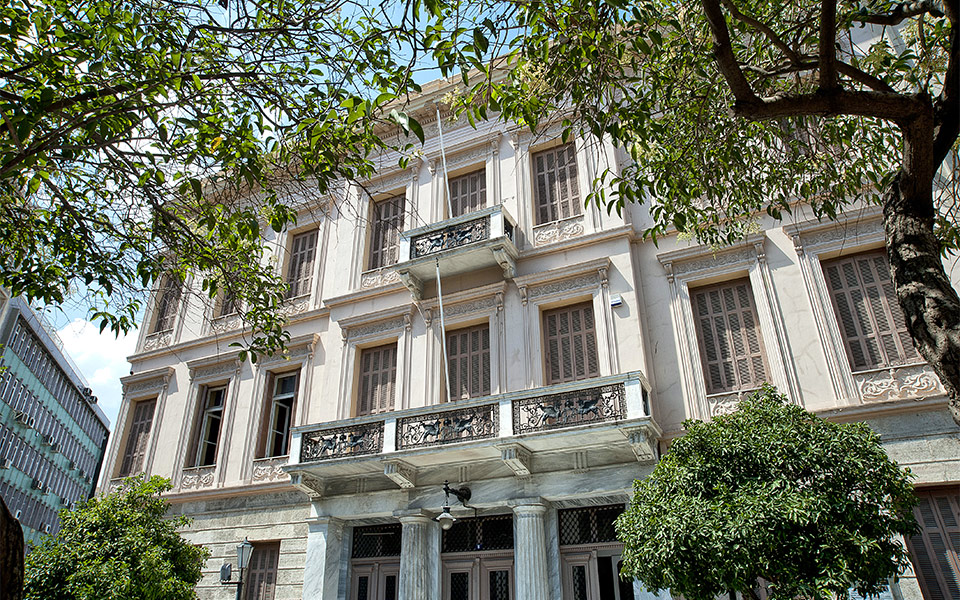
Parnassos has revamped its image in recent years to reach a wider audience of visitors.
PARNASSOS LITERARY SOCIETY
Original and actual use: One of the main intellectual institutions in Athens since 1865, it focuses on so-called “serious” music. The building was designed by the architect Iphicrates Kokkides and its foundation stone was laid by King Constantine I. It consists of three floors, with the secretary’s office, club and library on the ground floor. The first floor comprises a large ceremonial/concert hall with a distinctive architectural style; the mezzanine (between the first and second floors) is occupied by the Society offices, the board room and the Costis Palamas Hall, designed in the classical style. The second floor houses the Society Gallery with numerous paintings and sculptures, while on the third floor there is a special hall for exhibitions and various events.
Why visit: Parnassos was associated with well-heeled conservative Athenians. In recent years, however, it has revamped its image by hosting musical soirees aimed at a broader audience. The concert hall is austere, characteristic of a small and rather provincial city.
Info: Open daily apart from Sundays • 09:00-17:00 (20:00 on Thursdays and 14:00 on Saturdays)
• 8 Aghios Georgios Karytsis Square • Tel. (+30) 210.322.1917 • Syntagma & Panepistimio metro stations.
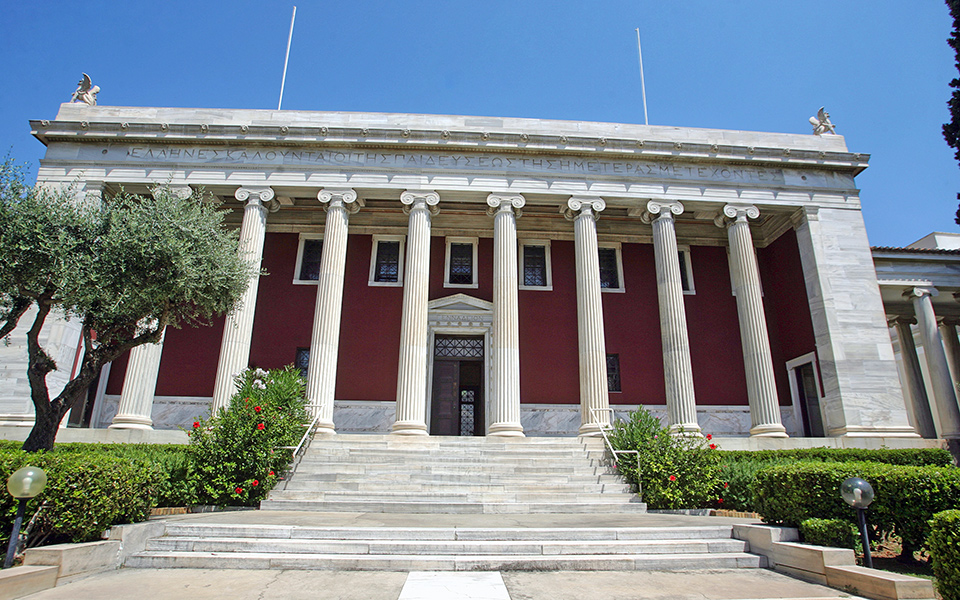
Over 120,000 books, archives and volumes are currently housed at the Gennadius Library.
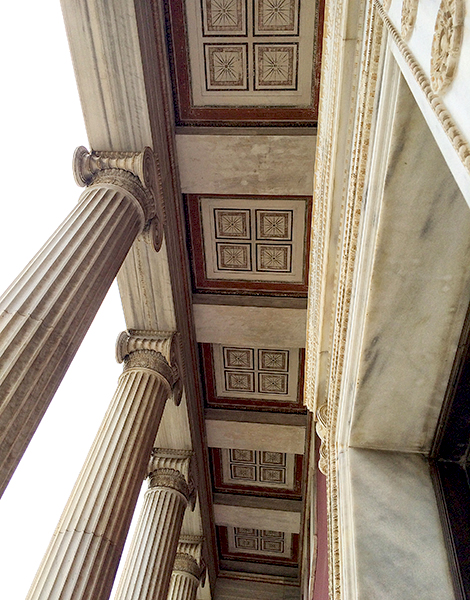
The marble columns and painted ceilings of the library are fine examples of neoclassical architecture.
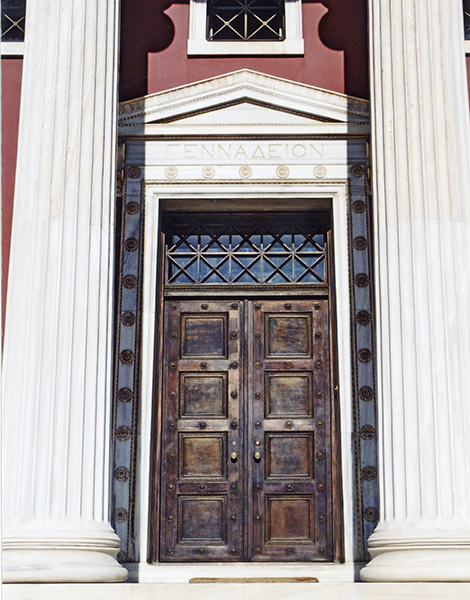
The collection at the library is available for the public's perusal within its premises.
GENNADIUS LIBRARY
Original & actual use: The Gennadius Library, managed by the American School of Classical Studies at Athens and located on the northwestern slope of Mount Lycabettus, was built in 1923 and designed by the American architect Stuart Thompson in the late neoclassical style. The library was opened in 1926 to house a significant donation of 26,000 volumes by the diplomat and bibliophile Joannes Gennadius and currently possesses a unique research collection comprising more than 120,000 volumes as well as rare book bindings, archives, manuscripts and works of art, relating to Greek tradition and neighboring cultures.
Why visit: For the tranquility emanating from the building’s clean-cut classicism, for the nice garden and because it is an excellent spot for a walk around the quietest part of Lycabettus.
Info: 61 Souidias, Kolonaki • Tel. (+30) 210.721.0536 • Evangelismos metro station.
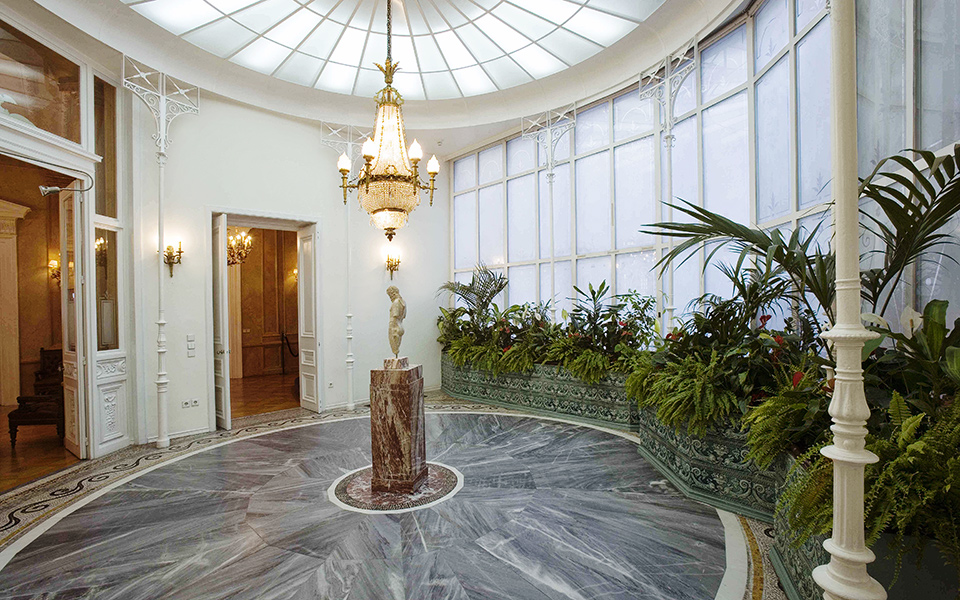
Stathatos Mansion dating from the late 19th century escaped the mania for post-war reconstructions.
STATHATOS MANSION
Original use: The Otto Stathatos Mansion was built in the late 19th century by the Bavarian architect Ernst Ziller (1837-1923) on designs dating to 1895. It is a typical upper-class residence with basement, ground floor and one upper level, with a rather peculiar layout. It was originally intended to house a family of two and to provide independent quarters for a guest as well. In 1930, the building was extensively repaired and refurbished, with plaster decorative elements also added at that time.
Actual use: It serves as an annex to the Museum of Cycladic Art, hosting temporary exhibitions.
Why visit: To appreciate one of the grandest mansions of aristocratic Vassilissis Sofias Avenue, fortunately spared the fever of post-war reconstruction.
Info: Admission costs € 7 (3.50 on Mondays) • Vassilissis Sofias & 1 Irodotou; Mondays, Wednesdays, Fridays & Saturdays 10:00-17:00, Thursdays 10:00-20:00, Sundays 11:00-17:00, closed Tuesdays • Tel.(+30) 210.722.8321-3 • Syntagma & Evangelismos metro stations.
The workshop of famed tile painter...
Tourists share the highs and lows...
The Goethe Institute's exhibition explores Athens'...
We join archaeologist and MONUMENTA coordinator...